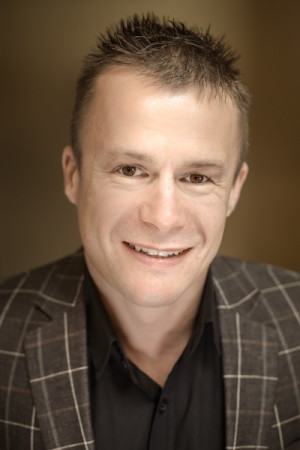Dr Eldridge began restricting his practice to Temporomandibular Joint Disorders (TMJD) a decade ago now in an effort to treat himself and ease his own symptoms after suffering pain for many years from severe tooth clenching, headaches, neck pain, and a jaw joint that popped and clicked. His entire practice, patient information forms, web site, and empathy for his patients is based entirely on best evidence-based medicine and dentistry, and most importantly from the experience of being a patient himself.
 Dr Eldridge has successfully treated thousands of people locally and interstate with some having even travelled from overseas countries.
He regularly contributes articles of interest to various magazines, both online and offline media outlets, professional development courses, and non-government organisations and committees to help promote and educate the public and broad range of health professionals alike on the diagnosis, treatment, and effects of orofacial pain, TMJ disorders, and snoring / sleep apnoea in adults and children.
Dr Eldridge has successfully treated thousands of people locally and interstate with some having even travelled from overseas countries.
He regularly contributes articles of interest to various magazines, both online and offline media outlets, professional development courses, and non-government organisations and committees to help promote and educate the public and broad range of health professionals alike on the diagnosis, treatment, and effects of orofacial pain, TMJ disorders, and snoring / sleep apnoea in adults and children.
His referral-based practice has grown over the years to include basic and complex oral surgical procedures such as extractions, wisdom teeth removal, implants and bone grafting, tongue tie (frenectomy) removals in children, and Oral Medicine. More recently, Dr Eldridge saw that there was a large need for a select group of the community to be provided with an option to be able to access high quality affordable dental treatment outside of a hospital setting. Today, the Hobart Orofacial Pain and Special Needs Clinic is the only dental practice of its type in Tasmania for the treatment and management of Orofacial Pain, TMJ Disorders, Headaches, Oral Surgery, Sleep Disorders, and those people with intellectual and physical disabilities, and dental fears and phobias.
These facets of the practice are all extremely important in the differential diagnosis of Orofacial Pain but also allow a very comprehensive diagnosis and treatment plan to be tailored to each individual patient, including children who are an often overlooked section of the population. This is particularly relevant when patients arrive in the practice for one pain complaint, but typically will have multiple contributing factors that may be physical, psychological, and often both. Hence, success of treatment relies on a properly evaluated and instigated ‘management plan’ rather than typical ‘tooth orientated’ dental approaches to pain.
A Doctor will truly understand his patients only after he has become one himself – Anonymous
Synopsis of symptom onset for Dr. Eldridge:
1992
• First ever migraine occurred.
• Regular morning headaches commenced.
1995
• Recurring nightmare commenced where teeth were falling out or shattering due to being clenched together so tightly during sleep.
• Occasionally would wake up in the middle of the night with teeth clamped firmly together and unable to open mouth for several seconds.
• Waking with neck pain commenced.
• Began receiving treatment from a physiotherapist, GP, and chiropractor for headaches and neck pain.
1997
• Ongoing regular migraines, episodic morning headaches, and neck pain.
• Pain and clicking commenced in the right jaw joint.
• Lower back pain commenced.
• Insomnia and an inability to fall asleep commenced.
1998
• Told by a “TMJ Dentist” that teeth clenching and jaw pain is ‘self limiting’ and it would ‘go away’. It didn’t.!
• GP, Physiotherapist, Chiropractor, and Acupuncturist treatment continued for headaches, neck pain, and lower back pain. All treatments were symptom-orientated.
• Sense of balance when walking began to deteriorate.
• Ear pain and tinnitus (ringing) began.
2000
• Right jaw began to lock closed in the morning.
• Tinnitus became severe and a feeling of a blocked right ear commenced.
• Many health practitioners continued to be regularly seen for various musculoskeletal aches and pains related to the neck, shoulders, upper back and headaches. All had very limited lasting effects and none offered a diagnoses of a ’cause’ of the pain, but rather all continued to treat symptoms.
2002
• Began study on Orthodontics and TMJ Disorders. Self-treatment with various types of mouth splints for TMJ pain commenced. Twelve different types and designs tried. Only 1 design was reasonably successful.
• Headaches reduced but neck pain and lower back pain continued, as did constant facial muscle tension.
2004
• Invited to visit and study in the rooms of TMJ Specialist Dr. Steven Olmos, San Diego, USA.
• Treatment of right TMJ commenced immediately with a daytime jaw repositioning appliance, and a night-time clenching appliance.
• Commenced intensive rehabilitation of neck, shoulders, posture, feet, and balance using chiropractic, physiotherapy, podiatry, and orthodontic regimes.
2005
• All symptoms of headaches, TMJ pain, and lower back pain resolved after 13 months of treatment.
• Self help measures to reduce daily muscle fatigue and stress management continue to this day.
• Regular exercise, yoga, relaxation, stretching, healthy diet, and use of night bruxism splint also continue to this day.

